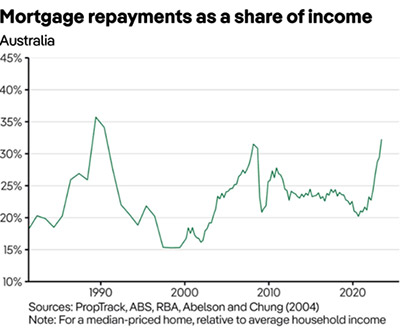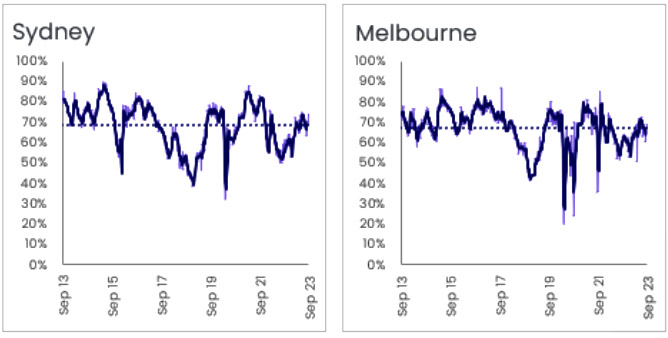Best places to invest as interest rates stabilise
Interest rates, short-term accommodation, migration; many variables are shaping the property market and influencing exactly where real estate investors should be focusing their attention.
It was the worst of times; it was the best of times.
It was supposed to be the year where a combination of rising interest rates and a slowing economy would dampen real estate prices.
So, are higher interest rates crushing the market? Well no, real estate in Australia has just recorded its sixth straight month of price rises, according to CoreLogic, and there’s no sign of prices falling.
But that’s not to say nothing has changed.
In many ways, things are quite different for investors looking to capitalise on real estate. The darlings of 2021 (think seaside towns in Queensland and NSW) are mostly in retreat while some affluent locations cannot produce enough properties for sale to meet buyer demand.
So, what are we likely to see as we move forward?
Debt levels outweighing interest rates

Interest rates alone won’t shape the market, but the relative amount of debt that buyers need in order to buy a home or investment property will.
To get a feel for how this works, take a look at this chart which tracks mortgage payments as a percentage of household income. When you see this line spike, as it is doing now, the amount people have to borrow (the numerator) becomes more important than the denominator (interest rates).
We can see that at work this year, as buyers with relatively low debt loads or buying with cash have been a key factor driving some parts of the multi-speed markets.
Which suburbs are boosted by short term accommodation?
The growth in residential properties turning to the short term rental accommodation (STRA) market has been an often overlooked factor.
Recent research from Per Capita’s Centre for Equitable Housing, Light as Air: Regulating Short Term Rentals in Australia, found STRA properties account for 7.6 per cent of rental stock and are recording three times the cash return possible for traditional rentals.
That makes the suitability of any property to the local STRA market a key factor.
While much of the discussion around the so-called Airbnb effect has centred on coastal regions, its growing influence has been more profound in inner and middle ring suburbs.
Here it only takes a small number, think one or two percent, of properties shifting to the STRA market to completely alter the balance of power between landlords and tenants, depleting the number of rentals and sending rents soaring.
If you’re looking for a location likely to have an outsized Airbnb effect, don’t be deterred by an area having a relatively low amount of STRAs. If it’s in a well located, well serviced suburb, it’s likely to do well.
That’s because in urban areas, most people booking STRAs are there either for work or visiting friends and relatives.
That makes well located inner suburban areas, such as North Sydney (NSW), Albert Park (Vic), Victoria Park (WA), Fortitude Valley (Qld) and Glenelg (SA), prime hunting grounds.
If you’re an investor, the suitability of your target property as an STRA is a key factor you should be assessing, even if you don’t plan to list your property on an app.
Investors should tune in to vacancy rates
Sustained low vacancy rates have set the scene for some uncharacteristically big rent rises over the last year.
While the 15-year average for rent rises was 3.5 per cent, rents have now risen 6.7 per cent this year and are on track to record a 10 per cent rise next year.
So, if you’re looking for an area to get good rental returns, step one is to find one with a low vacancy rate.
Where are these? At the moment, basically everywhere.
Below are the lowest vacancy rates in metro (or neighbouring) suburbs, but all of Australia’s 20 largest urban areas and most regional areas are currently sporting record low vacancies.
Urban areas with lowest vacancy rates
| NSW | VIC | QLD | WA | SA |
|---|---|---|---|---|
| (0.2%) Camden | (0.3%) Cardinia | (0.1%) Strathpine | (0.0%) Kalamunda | (0.1%) Playford |
| (0.4%) Blue Mountains | (0.4%) Yarra Ranges | (0.2%) North Lakes | (0.2%) Gosnells | (0.1%) Salisbury |
| (0.4%) Richmond – Windsor | (0.4%) Nillumbik – Kinglake | (0.3%) Gold Coast – North | (0.2%) Armadale | (0.1%) Port Adelaide – East |
| (0.5%) Campbelltown | (0.5%) Frankston | (0.3%) Caboolture Hinterland | (0.2%) Serpentine – Jarrahdale | (0.1%) West Torrens |
| (0.5%) Sutherland – Menai – Heathcote | (0.5%) Sunbury | (0.3%) Chermside | (0.2%) Cockburn | (0.2%) Onkaparinga |
Source: Domain.
Migration driving rent rises
Step two for finding the right location then is to take a look at which areas are likely to see sustained rent rises even when Australia’s current high pulse of migration begins to slow.
Data from PropTrack shows investor enquiries have surged in some Local Government Areas (LGAs) like Knox, in Melbourne’s outer east, Armadale in Perth, Willoughby on Sydney’s north shore, and Burnside in Adelaide.
There’s one common theme with these areas: they are where rents have grown faster than the capital city or region they’re located in.
As we move forward, I expect this investor behaviour to deepen, with more demand coming for apartments and houses in areas with faster than average increasing rents.
And those locations will essentially fall into two camps: affordable but well-connected outer suburbs and large regional centres and prime inner-middle city areas.
Which property markets are poised to perform?
In this environment, areas with high debt households, lower rental demand and low STRA appeal will struggle.
Conversely, those areas with strong fundamentals attracting buyers with moderate or low debt levels or investors focused on properties with good prospects for increasing income return will do well.
That narrows an investor’s focus to well serviced suburbs with high residential amenity in Australia’s largest cities and in a few large regional centres.
We’re already seeing the market settle into its new equilibrium, with auction clearance rates around the 70 per cent mark in Sydney and Melbourne, despite the significant lift in properties listed for sale.
Auction clearance rate

Source: CoreLogic.
Some of the best figures recorded were in the best serviced areas, like Sydney’s Inner West and Inner South West and Melbourne’s Inner East.
Expect that trend to continue.




















